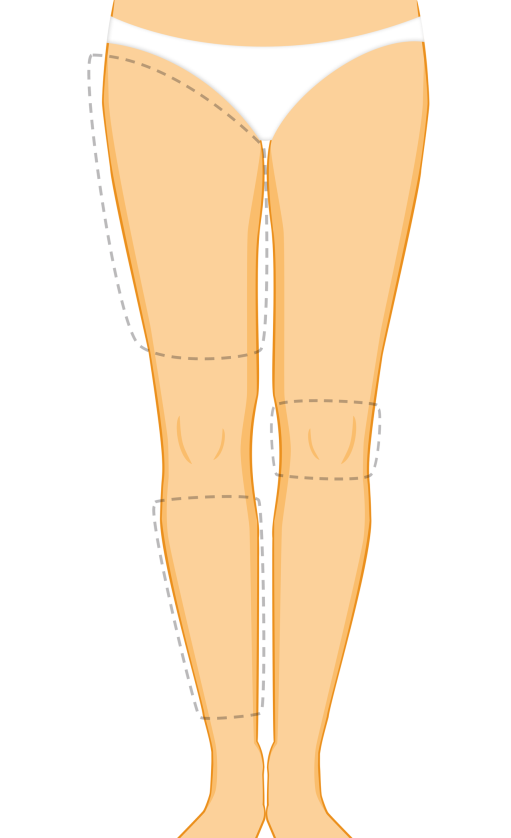Liposuction
Telemedical Consultations

What is lipedema?
A hypothetical genetically encoded, often inherited, predisposition causes adipose tissue, especially in the extremities, to store fat with lipedema syndrome but appear to release it poorly. Lipedema fatty tissue is characterized less often by pain on contact, more often by pain on pressure and tendency to swell. If a so-called lipedema progresses extremely, the lymphatic system may also be affected and lymphedema may develop in addition to lipedema.
Even if a common diet, namely one limited in time, does not help to catch the cause of lipedema, a reliable calorie balance should be maintained so that the mass of stored fat does not increase. In the case of concomitant obesity, a calorie-deficient lifestyle and, if necessary, a deacidifying, carbohydrate-adapted diet must be tailored to the disease. The only therapy that can precisely reduce lipedema fat tissue is liposuction for lipedema. Removal of lipedema tissue in the presence of existing obesity often sets in motion a successful weight loss cascade. In cases of significant obesity, weight loss must be safely initiated prior to liposuction.
Cause of lipedema
A mitochondrial disorder with cellular undersupply could underlie the fat type. A hypersensitivity of fat cells to estrogen would be conceivable, since it is predominantly women who are affected by the syndrome lipedema. Another possible cause would be a gene alteration causing an autoimmune reaction against the adenohypophysis - three conjunctives. In addition, fat metabolism does not function optimally in over-acidified fat masses. Although there is no certainty about the trigger of lipedematous changes, there is consensus about a self-reinforcing course of the disease if no therapy is applied.
Water jet technology
Therapy for lipedema
Depending on the findings, lipedema can be treated with good success by several liposuctions. A holistic therapy approach ensures that the lipedema does not worsen again after the operation.
Liposuction for lipedema stage 3 as a health insurance benefit
In the fat distribution disorder lipedema, despite all diets, the legs or the affected regions do not lose weight to the expected extent. The growing fat coat makes the legs look columnar, often in the area of the lower legs, or leads to a pear shape with wide buttocks and makes them heavy. Exercise may temporarily lead to increased water retention. As lipedema progresses, symptoms such as pain from pressure, touch or even rest may increase. Common non-surgical therapies consist of decongestion and compression. Lipedema tissue or disproportionate fat tissue cannot be removed locally conservatively. Volume reduction after lymphatic drainage may even give the patient the wrong thing, improvement in findings. The surgical therapy for lipedema is liposuction - liposuction. Removal of lipedema fat tissue is a very effective therapy, which relieves symptoms and improves aesthetics at the same time. Lipedema liposuction is fundamentally different from conservative, or non-surgical, treatment approaches. Here you can see a video on the technique of lipedema suction.
Definition and clinical diagnosis
The diagnosis of lipedema is made clinically. An apparative examination is not necessary. Although the thickness of the fat layer could be measured by ultrasound, the dysproportional distribution of fat and the type of connective tissue are particularly typical. Vascular diseases should be excluded and any thyroid deficiencies should have been treated in advance. The diagnosis can be made with certainty if the following criteria are exhibited:
- ◉ symmetrical, dysproportional fat deposits
- ◉ as a rule, extremities accentuation
- ◉ subjektive Neigung zu Spontan-Hämatomen
- ◉ subjective tendency to spontaneous hematomas
- ◉ possibly touch pain or pressure pain
- ◉ orange peel skin (cellulite)
- ◉ fat depot at the shinbone head inside
- ◉ Gonarthrosis (in the further course)
- ◉ possibly metabolic diseases as a consequence


